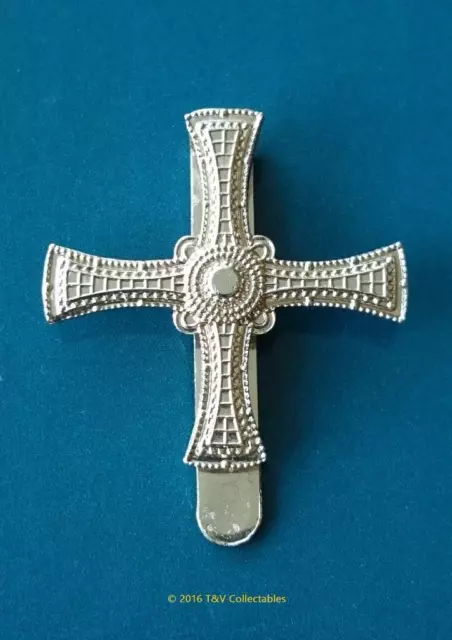Northumbrian Universities Officer's Training Corps Cap Badge (Lbbc)
NORTHUMBRIAN UNIVERSITIES OFFICER'S TRAINING CORPS CAP BADGE (LBBC)
Click image to enlarge
Description
Northumbrian Universities Officer's Training Corps Cap Badge (LBBC)
This Sale is for the Cap Badge as worn by the Northumbrian Universities O.T.C. (formerly Durham University O.T.C.).
Brand New and unissued staybrite anodised Cap Badge in an all Gold finish, approx. 33mm high, complete with it's mounted slider and made by the London. Badge & Button Co. Ltd.
Guaranteed new/unissued and in mint condition.
Northumbrian University Officer Training Corps ( NUOTC ) members are drawn from the Universities of Newcastle , Durham , Northumbria , Teeside and Sunderland .
Northumbrian Universities Officers Training Corps (NUOTC ) is a Type B Army Reserve Unit of the Army Reserve ( AR ) . Its role is to provide a practical link between the Army and University thereby fostering interest in, and understanding of the Army and its role in defence policy. NUOTC can be regarded as a Unit where undergraduates can meet and share a common interest. Activities include Military Training for the Military Leadership & Development Programme 1 and 2 awards , Adventurous Training pursuits such as Skiing , Sailing , Rock Climbing , Fell Walking , Sport and both formal and informal Social events . These activities should provide a welcome break from Academic studies. Membership of NUOTC is a voluntary spare time activity for which there is no membership fee ; on the contrary members are paid for attending training at full AR rates of pay. An undergraduate need have no fear that membership will in any way prejudice his or her chance of obtaining a degree or diploma as it has always been recognised that a student's academic work must have priority. To this end training programmes are geared to academic life. OrganisationThe Unit consists of a Headquarters and three sub-units : Armour , Artillery and Infantry . Female members are fully integrated into all sub-units . The Permanent Staff consists of Officers and Warrant Officers of the Regular Army and each sub-unit has Officers holding AR Commissions . A number of senior Officer Cadets are appointed as Under Officers with appropriate responsibilities.
Entry
Undergraduates may enlist at 17½ years or over and will hold the rank of Officer Cadet . Service may be terminated at any time by request. Applicants must first have an interview either at the Freshers Fair or at the AR Centre and then attend the Selection Weekend (usually the first or second weekend in October) to join. Details from address below.
Conditions of Service
Members are required to attend a minimum number of training periods to qualify for an Annual Bounty of up to £211 tax-free. This minimum is 15 days at camp in the summer (June/July) and 15 periods during the rest of the year, all of which attract pay of at least £39.11 a day.
T raining
Training takes place on Wednesday evenings during term, together with some weekend camps . Most of the training weekends are held in the Michaelmas and Epiphany Terms. The Unit enters and has been highly successful in, a variety of events in competition with Regular and other Territorial units . The aim of all training is to introduce Officer Cadets to Leadership training and Communication skills , as well as various aspects of Military life . The Military syllabus covers Army Organisation , Tactics , Small Arms , Radio , Map Reading , First Aid , administration and the Special to Ar m subjects for each sub-unit . Adventurous Training opportunities include attendance on Regular Army courses or as Specialist Expeditions . If two years' training is successfully completed Officer Cadets will be eligible for a City and Guilds Leadership Award .
Commissions
Membership of NUOTC is an important asset when applying for a Regular or Reserve Commission , and many Officer Cadets are commissioned from NUOTC into the Regular and the Army Reserve each year.
Full details of all types of commissions may be obtained from the Commanding Officer .
Social
Officer Cadets are full members of the Officers Mess . They live in the Officers' Mess when attached to other units or when on Courses of instruction . The Unit runs many social functions during the year, including the Annual Military Lecture , the Annual Dinner , a Ball (every two years) and several informal Dinners and Discos .
Officers
Commanding Officer
Lieutenant Colonel
Adjutant/ Quartermaster
Captain (Retd )
Their mission At NUOTC the aim is to develop the leadership potential of selected University Students through enjoyable and challenging training in order to communicate the values, ethos and career opportunities of the British Army .This is achieved by a combination of Military , Adventure Training , Sporting activities and Competitions balanced against fun and social activities .
Recruiting
An intake of new Officer Cadets occurs every October. A Team made up of current Officer Cadets and Staff travel around the Fresher's' Fairs recruiting new Students . This is the perfect opportunity to approach the Team with any burning questions. The Team will give you a good idea as to how NUOTC operates , explaining the sorts of activities that occur, whether it be a weekend exercise or Adventurous Training . If you miss the Fresher's Fair and are still interested, do not hesitate to contact them for further information, you may still be able to apply.
The next step is to attend an Open Evening at their base , St Cuthbert's Keep , situated in Newcastle , and they will give a greater insight into what they actually do as a UOTC as well as give you another chance to meet some of their current Officer Cadets .
Having attended an Open Evening you will be more determined to join and your next step is to attend the Selection Weekend . The weekend is exciting and challenging, with activities not to dissimilar to that of the Army Officer Selection Board . You will complete and deliver a short presentation , take part in group activities and complete some form of leadership task .
NUOTC Association
The NUOTC Association is open to anyone who has ever been a member of Northumbrian University Officer Training Corps . It is an opportunity to keep in touch with old friends and keep up to date with events.
Members can attend any of the Association's events held during the year. It's all about catching up and reliving the glory days . If you are an ex-member and would like to join the Association , do please contact them and they will give you the relevant details.Contact NUOTC
Telephone: 0191 239 5328
Northumbrian Universities Officers Training Corps St Cuthberts Keep, Holland Drive Newcastle Upon Tyne NE2 4LD
Officer Training Corps
The University Officers' Training Corps ( UOTC ) is a Type B Army Reserve unit, but is very similar to a University society . It presents university students with a unique opportunity to develop themselves by partaking in military exercises, adventurous training, sport, community projects and expeditions both in the UK and overseas. There are 15 UOTCs and 2 Officer Training Regiments ( OTRs - incorporating 2 UOTCs each) spread across the country. Catering for over 4000 university students drawn from about 150 Universities. Each UOTC is effectively an independent regiment with its own cap badge, stable belt and traditions, and is usuall based close to the University in self-contained buildings or within a local Army Reserve centre . Officer Cadet UOTC members are classed as Officer Cadets (OCdt ) and are members of the Army Reserve , paid when on duty. UOTC members cannot be mobilised for active service, have no obligation to join the armed forces when they leave university and can resign from the UOTC at any time. The UOTC has two key roles. Firstly to provide military experience to those OCdts who ultimately go on to civilian employment, so they are minded to act as positive advocates for the Army and secondly, to aid in and facilitate the recruiting of regular and reserve officers. The UOTC is led by officers and non-commissioned officers, who function as instructors and support staff, from the Regular Army and the Army Reserves .
- Aberdeen UOTC
- Birmingham UOTC
- Bristol UOTC
- Cambridge UOTC
- East Midlands UOTC
- City of Edinburgh UOTC
- Exeter UOTC
- Glasgow and Strathclyde UOTC
- North West Officer Training Regiment
- Northumbrian UOTC
- Oxford UOTC
- Queen's UOTC
- Southampton UOTC
- Tayforth UOTC
- Wales UOTC
- University of London Officers' Training Corps (ULOTC)
- Yorkshire Officer Training Regiment (formerly Yorkshire Universities OTC )
The name is misleading in that its mission is not the training of commissioned Officers ; only a small minority of OTC members go on to further train, and subsequently, be commissioned as Officers in the Regular or Army Reserve . However, in recent years there has been a greater effort at OTCs to raise awareness of the career opportunities within the Regular or Army Reserve (although the mission statement has not changed). It is similar in some ways to the United States Army Reserve Officers' Training Corps , with which several OTCs have a regular exchange. However, a fundamental difference is that ROTC s are actually Officer training establishments and thus have a rather different ethos and work ethic. The Ministry of Defence marketed the OTC as "a University/College club with a great and varied social life ... where you'll find some of the cheapest drink on campus."
In 2011, an MoD study recommended the downgrading of UOTCs to sub-units (commanded by a Major rather than a Lieutenant Colonel ) and the formation of twelve Officer Training Regiments , each comprising one or two OTC Companies and a TA Officer Training Wing . The study also concluded that OTC Officer Cadets should not be attested or paid in their first year.
History
In 1880s Glasgow Professors such as William John Macquorn Rankine and Students formed two Infantry Companies as part of the local 1st Lanarkshire (Glasgow 1st Western ) Rifle Volunteers . This unit later became the 5th Battalion of the Cameronians (Scottish Rifles ) , based at West Princes Street Drill Hall in the Woodlands area of Glasgow .
In Aberdeen the first formed University Unit was a Battery of the 1st Aberdeen Volunteer Royal Artillery , raised in December 1885. The Battery was officered by members of the University Staff and C ommanded by Captain William Stirling , then Professor of Physiology . In March 1895 the University Battery was absorbed by the 1st Heavy Battery . In November 1897 an Aberdeen University detachment of the 1st Volunteer Battalion the Gordon Highlanders was recruited and in 1898 the detachment became University Company ("U " Coy ). Haldane Reforms
The emergence of the OTC as a distinct unit began in 1906 when the Secretary of State for War , Lord Haldane , first appointed a committee to consider the problem of the shortage of Officers in the Militia , the Volunteer Force , the Yeomanry and the Reserve of Officers . The committee recommended that an Officers' Training Corps be formed. The Corps was to be in two Divisions , a junior Division in Public Schools (now the Combined Cadet Force ) and a senior Division in the Universities .
In October 1908 therefore, authorised by Army Order 160 of July 1908 , as part the Haldane Reforms of the Reserve forces , the contingent was formally established as the Glasgow University Officer Training Corps and incorporated in the new Territorial Force , which was created by the Territorial and Reserve Forces Act 1907 .
During the First World War , the senior OTCs became Officer producing units and some 30,000 Officers passed through, but after the war reverted to their basic Military Training role .
During the 1930s the OTCs began to increase in strength. They peaked in 1938 during the Munich Crisis . In the Second World War they again became Officer producing units for the A rmy .
In 1948, the senior OTC divisions became part of the Territorial Army , and women were accepted for the first time with the formation of Women's Royal Army Corps sub-units . Women are now fully integrated into all sections. The junior Divisions , by then renamed the Junior Training Corps , became the Army Sections of the Combined Cadet Force . For the next twelve years until its abolition in 1960, the Corps aim was to prepare Students for National Service .
Present Day
There are fifteen Officers' Training Corps throughout the United Kingdom , each of which serves the Universities in a distinct geographic area. Those serving larger areas may have several detachments . Each OTC is effectively an independent Regiment , with its own Cap Badge and Stable Belt . Most OTCs are split into a number of sub-units representing different Arms and Services , which Cadets join when they have completed their initial training .
On 1 April 2005 there were 4,257 personnel in the OTCs . OTC members are classed as Officer Cadets (OCdt ) and can gain internal appointments to Junior Under Officer and Senior Under Officer . They are "Group B " members of the Army Reserve with whom they are neither trained nor liable for mobilised (active ) service. Cadets have no obligation to join the Armed Forces when they leave University and can resign from the OTC at any time; indeed 90% of those serving with an OTC do not go on to either the Regular or Army Reserve .
The Officers and non-commissioned Officers , who function as Instructors and Administrative and Support staff , are a mixture of Regular Army and Territorial Army (including Non Regular Permanent Staff ).
Mission Statement
The Officers' Training Corps is intended to develop the Leadership potential of selected University Students . It aims to achieve this through enjoyable and challenging training. In providing such an experience, it hopes to communicate the values, ethos and career opportunities of the British Army .
Military training
Now all Officer Training Corps come under the Command of Royal Military Academy Sandhurst and follow a syllabus set by the RMAS . Responsibility is given to individual OTCs how to execute the curriculum under close coordination with RMAS and other OTCs . Considerable care is put to make the training challenging, enjoyable and relevant. Training is structured and progressive. Military training is delivered across a 7 weekend package and weekly training nights introduce leadership and team building skills, used in both military and civilian sectors. To become an Army Reserve Officer , you need to complete 4 Modules: Alpha, Bravo, Charlie and Delta. In your first and second year of UOTC you will complete Modules Alpha and Bravo respectively. You can then make the decision to complete your Army Reserve Officer Training by completing Modules Charlie and Delta at Sandhurst thereby earning your Army Reserve Commission . Alternatively, you simply take the training and experience you have gained into your civilian career.
At the end of each module Officer Cadets must pass the assessments in order to progress to the next module. In order to progress to Commission as an Officer all modules must be completed as well as a final Modules at the Royal Military Academy Sandhurst .
Year One
Basic military training : Called MOD Alpha , this year involves Military Drill , individual skills and Field Craft . Cadets are introduced to a range of basic Military techniques , including Map Reading , Camouflage , First Aid , Weapons Training , Radio Procedure and Field Craft . Procedures such as how to establish an overnight patrol base and how to fire and manoeuvre effectively as part of a team are also covered.
Year Two
Called Module Bravo , this introduces Officer cadets to Military Leadership at a Platoon level . This involves the planning and decision making process, giving orders, ensuring they are carried out, directing a constructive debrief after an exercise and ensuring the welfare of all those under their command. It is possible to complete Module Bravo in the summer of your first year. OCdts get paid for their attendance.
Year Three and beyond
Some Cadets choose to attempt Officer Selection and gain a commission with the OTC ; others choose to spend the remainder of their time with the OTC as Officer Cadets . The minority who go on to join the Regular Army after OTC undertake the same training as those joining from civilian life.
Adventurous Training and Social Life
Concurrently with Military Training , many OTCs provide the opportunity to pursue Sporting and Adventurous hobbies . Sports such as Skiing , Mountain Trekking , Climbing and Sailing are actively encouraged. With access to the Army Reserve's resources for Adventurous Training , Students are enabled to pursue their other hobbies alongside their Degrees . Socially, the OTCs hold frequent Parties and informal social events throughout the year which attract local press coverage.
Individual Units
Oxford
Oxford UOTC claims descent from the bodyguard to Charles I that students of the University of Oxford formed in 1642, during the English Civil War . But the immediate origin of the present body is the 1st Oxfordshire ( Oxford University ) Rifle Volunteer Corps , formed in 1859 and established (together with many other volunteer corps across the country) in response to the threat of war with France. From 1881, the OURVC served as one of several volunteer battalions of the Oxfordshire Light Infantry and in 1887 it became known as the 1st ( Oxford University ) Volunteer Battalion or the Oxford University Volunteers (OUV). The OUOTC was then one of 23 such bodies formed at universities in Great Britain following the establishment of the Officer Training Corps by Royal Warrant in 1908.
Cambridge
The origins of Cambridge University Officers’ Training Corps date to 1803 when, with Britain under threat of French invasion , Cambridge University undergraduates formed a corps of Rifle Volunteers to help defend British shores . Thereafter, the Cambridge University Rifle Volunteers (CURV ) was raised formally in 1860. During British involvement in the Second Boer War in 1899 there was a public focus on volunteering for the Armed Forces serving in South Africa . In response to this, over 100 members of CURV applied, however due to age, qualification, training and critically the ability to shoot excellently meant that only 28 were successful.
Joined with The Suffolk Regiment , on 20 January 1900 in Bury St Edmunds the CURV reported for duty . On 11 February that they sailed from Southampton on the S.S. Doune Castle arriving in Cape Town on 7 March. Initially the Cambridge Volunteers worked as guards to the Railway Lines around Cape Town but alongside the Suffolks they joined the siege at Pretoria on 4 June. Although the defending Boer guns sent down artillery fire , no casualties were taken and the City had fallen by the time the Volunteers arrived. This marked the end of the conventional phase of the Boer War and the progression into a more guerrilla style warfare and the Volunteers guarding the Railways from the Boer ‘Commando’ style attacks .
When the Suffolk Regiment marched as part of General Mahon’s column to attack a Boer position in Barberton , the Cambridge Volunteers joined them. With 600 Boers entrenched around the town , with supporting artillery the battle was over before the Volunteers had arrived. However due to their prowess at shooting , they were detailed to harrying the retreating Boers with long range rifle fire . After more guard duties they disembarked from Cape Town in April 1901 and returned to Britain on 4 May.
With a large welcome home awaiting them, including a service in Great St Mary’s Church, the volunteers were back in Cambridge on 6 May 1901. This welcome included all the Volunteers being made Honorary Freemen of the Borough of Cambridge and on 21 December 1904, three years later, CURV were granted the battle honour "South Africa 1900-01 ". In 1908 CURV was renamed "Cambridge University Officers’ Training Corps " and remains the only Officers’ Training Corps to be awarded a Battle Honour .
Tayforth
Tayforth UOTC is formed of three sub-units: A (The Senior ) Squadron draws its members from the University of St Andrews , B Squadron draws its members from the universities of Dundee and Abertay and C Company draws its members from Stirling University . Tayforth is descended from a Miltia formed from the time of Charles II and the Jacobite Rebellions of 1715 and 1745. In 1859 a committee was formed in St Andrews to form a volunteer corps of both rifle and artillery. This was carried in a town meeting on 5 December 1859 and was carried out unanimously, and 3rd (St Andrews ) Fife Artillery Volunteers was formed. Following the formation of Dundee University from University College Dundee , a part of the University of St Andrews in 1967, the OTC became St Andrews and Dundee University OTC . With the addition of Stirling University the OTC was renamed Tayforth Universities OTC , as St Andrews , Dundee and Stirling Universities was considered a bit of a mouthful. The name Tayforth was chosen as Dundee is situated on the River Tay and Stirling on the River Forth . The concern was that St Andrews , as the senior university may not agree with this name, however as the River Tay and River Forth are the boundaries of the Kingdom of Fife , within which St Andrews is located, it was approved by the MEC. In May 1976, The Old Wyvernians formed as a regimental association for the former officer cadets of St Andrews OTC . The inaugural meeting of the Tayforth Regimental Association was held on 16 June 1984, and was the first of its kind. Whilst other OTC's followed suit The Tayforth Regimental Association is the oldest of its kind. Bristol
Bristol UOTC was formed in 1910, is one of the oldest in the country, with only Oxford , Cambridge , London and Edinburgh having older-established units. Exeter
An early UOTC existed in Exeter but it lapsed in 1945 and prior to the unit's reformation in 1980 undergraduates from the University of Exeter who wished to join an UOTC travelled to Bristol. With the establishment of the Polytechnic South West in Plymouth and the enlargement of the University of Exeter, Exeter UOTC was formed on 1 April 1980 with Major General John Acland as its first Honoury Colonel. Initially the unit occupied 12 dilapidated huts in Higher Barracks, Exeter.
| Recruits From | |
|---|---|
| Aberdeen UOTC | University of Aberdeen, Robert Gordon University and Aberdeen College |
| Queen's UOTC | Queen's University Belfast and the University of Ulster |
| Birmingham UOTC | University of Birmingham, Birmingham City University, University College Birmingham, Warwick, Aston, Coventry, Wolverhampton, Worcester, Keele, Staffordshire University and Harper Adams University College |
| Bristol UOTC | University of Bristol, University of Bath, University of the West of England and Bath Spa University |
| Cambridge UOTC | Cambridge University, University of East Anglia, Anglia Ruskin University, University of Hertfordshire and University of Essex |
| City of Edinburgh UOTC | University of Edinburgh, Napier University, Heriot-Watt University, Edinburgh Napier University, Queen Margaret University and the Scottish Agricultural College |
| East Midlands UOTC | Nottingham University, Nottingham Trent University, Northampton University, Leicester University, Derby University, De Montfort University, Loughborough University, University of Lincoln |
| Exeter UOTC | University of Exeter, Plymouth University, |
| Glasgow and Strathclyde UOTC | Glasgow University, Strathclyde University, Glasgow Caledonian University, University of the West of Scotland |
| University of London Officers' Training Corps (ULOTC ) | Anglia, Birkbeck, Brighton, Brunel, Bucks Chiltern, Camberwell College of Arts, (University of the Arts), Canterbury, Central School of Speech & Drama, Central St Martin's School of Art & Design (University of the Arts), Chelsea College of Art & Design (University of the Arts), City Courtauld Institute of Fine Art, East London, Essex, Goldsmith's, Greenwich, Hertfordshire, Heythrop, Imperial, Kent, King's College, Kingston, London Business School, London College of Communication (University of the Arts), London College of Fashion (University of the Arts), London Metropolitan, LSE, Luton, New College of the Humanities, Middlesex, Queen Mary, Roehampton, Royal Academy of Music, Royal College of Art, Royal College of Music, Royal Holloway, Royal Veterinary College, SOAS, South Bank, St Georges, St Mary's, Surrey, Sussex, Thames Valley, UCL - Gower Street and Royal Free, Westminster |
| North West Officer Training Regiment | University of Manchester, Manchester Metropolitan University, University of Salford, University of Liverpool, Lancaster University, Liverpool John Moores University, Hope College, University of Central Lancashire, Edge Hill University College, St Martins College, Chester College |
| Northumbrian UOTC | Universities of Newcastle, Northumbria, Durham, Teesside and Sunderland |
| Oxford UOTC | Oxford University, Oxford Brookes University, Reading University, Royal Agricultural College Cirencester, University of Buckingham, The University of Gloucestershire and the Royal Military College Shrivenham |
| Southampton UOTC | University of Winchester, Solent University, Bournemouth University, Southampton University, Portsmouth University, University of Brighton |
| Tayforth UOTC | St. Andrews University, Dundee University, Abertay University, Stirling University |
| Wales UOTC | Cardiff University, UWIC, Aberystwyth, Bangor, Swansea, University of Glamorgan, Wrexham, Chester. |
| Yorkshire Officers' Training Regiment (formerly Yorkshire Universities OTC ) | University of Sheffield, Sheffield Hallam University, Leeds Universities, Bradford University, Huddersfield University, University of York University, York St John University and Hull University |
Inter-OTC Competitions
The British Army run several Competitions throughout the Academic Year where the OTCs and the four Defence Technical Undergraduate Scheme ( DTUS ) Squadrons have a chance to compete against each other. One of these is the Queen's Challenge Cup , a Sports Competition .
Bans
In March 2008, a motion was passed during the University College London Union 's Annual General Meeting to ban Armed Forces groups and societies such as the University Royal Naval Unit (URNU ), Officer Training Corps (OTC ) and University Air Squadron (UAS ) from operating within University College London Union locations and events . This action made headlines in the British National press , partly due to an unrelated issue at the time where RAF personnel in Peterborough had been ordered not to wear uniform off-site for fear of aggression from members of the public .
Through a subsequent motion passed through the Union Council the decisions made at the Annual General Meeting were ratified; however the ban was subsequently overturned by a large majority in following year's AGM of 27 February 2009.
This coincides with similar actions taken at the University of Cambridge and Goldsmiths College . The University of Manchester followed with a proposal to ban Military recruitment which also received press attention. However, this proposal failed .
MILITARY - BRITISH ARMY
Other Badges and item's are also available via 'Buy it Now' from our eBay Store.
Buyers!!! Please read all of the Sale listing before buying, including the section below, and note acceptable methods of Payment and Postage details (especially if you are buying from outside the UK). We will not be held accountable for the buyers own mistakes.
Please do keep a lookout for our other Sale lots coming soon!!!
Or visit our eBay Store 'Tomo's Collectables'
Check out our other Items For Sale!
Be sure to add us to your favourites list !
| |||||||||||||
| Images sell! Get Supersized Images & Free Image Hosting | Create your brand with Auctiva's Customizable Templates. |
- Condition: New
- Regiment Type: University Officer's Training Corps
- Modified Item: No
- Country/Region of Manufacture: United Kingdom
- Decade: 2000 to Present
- Material: Anodised Aluminium
- Theme: Military
- Type: Beret/ Cap/ Hat Badges
- Sub-Theme: British Army
PicClick Insights - Northumbrian Universities Officer's Training Corps Cap Badge (Lbbc) PicClick Exclusive
- Popularity - 6 sold, 5 available. 2 watchers, 0.0 new watchers per day, 2,348 days for sale on eBay. Good amount watching.
- Best Price -
- Seller - 13,678+ items sold. 0% negative feedback. Great seller with very good positive feedback and over 50 ratings.
People Also Loved PicClick Exclusive
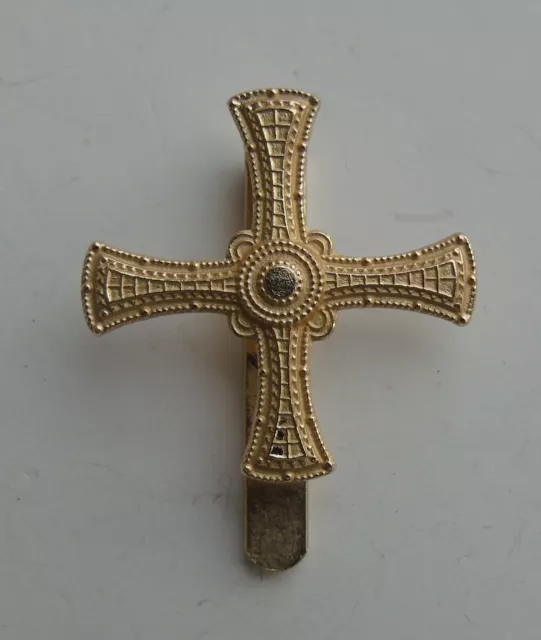
Northumbrian University Officer Training Corps OTC Anodised Cap Badge
£7.99 Buy It Now 16d 19h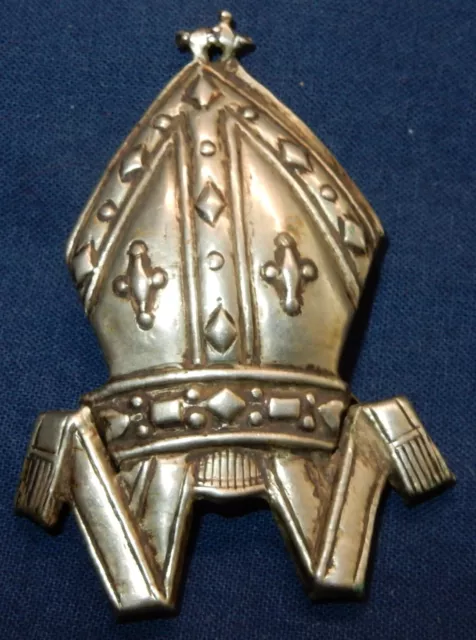
Ww1 Era Chigwell School Otc Officer Training Corps Cap Badge British Military Wm
£11.50 13 Bids 1d 0h
British Army Cap Badge Cambridge University Officer's Training Corps ( O.t.c. )
£9.99 Buy It Now 10d 12h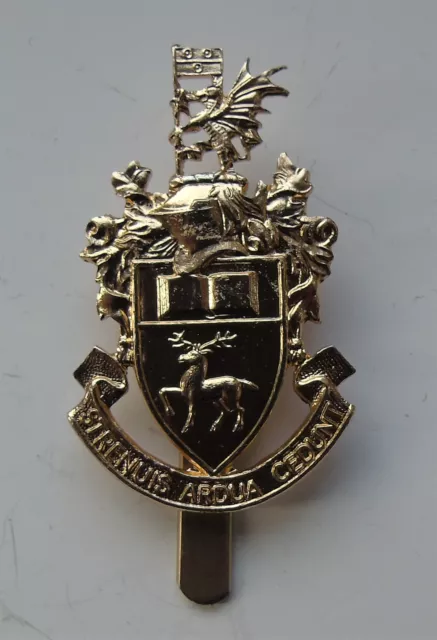
Southampton University Officer Training Corps OTC Anodised Cap Badge
£8.99 Buy It Now 19d 16h
Canadian Army Cap Badge. Canadian Officer's Training Corps.
£9.99 Buy It Now 27d 14h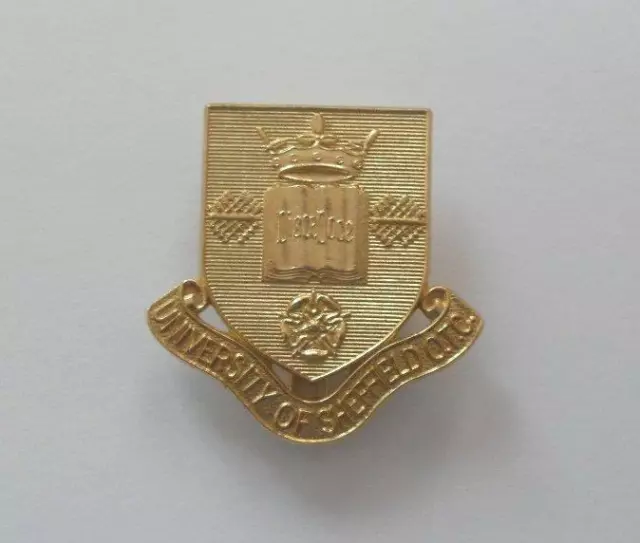
British Army Cap Badge. Sheffield University Officer's Training Corps.
£9.99 Buy It Now 28d 15h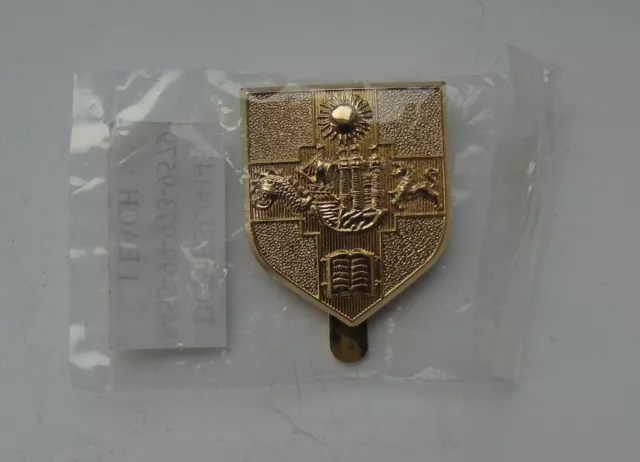
Bristol University Officer Training Corps OTC Anodised Cap Badge
£9.99 Buy It Now 19d 16h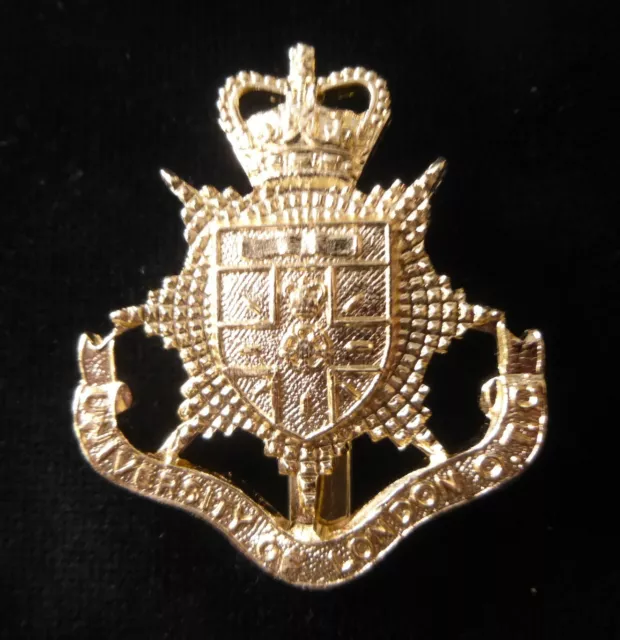
Anodised (Staybrite) Cap Badge University of London Officer's Training Corps OTC
£4.99 Buy It Now 3d 23h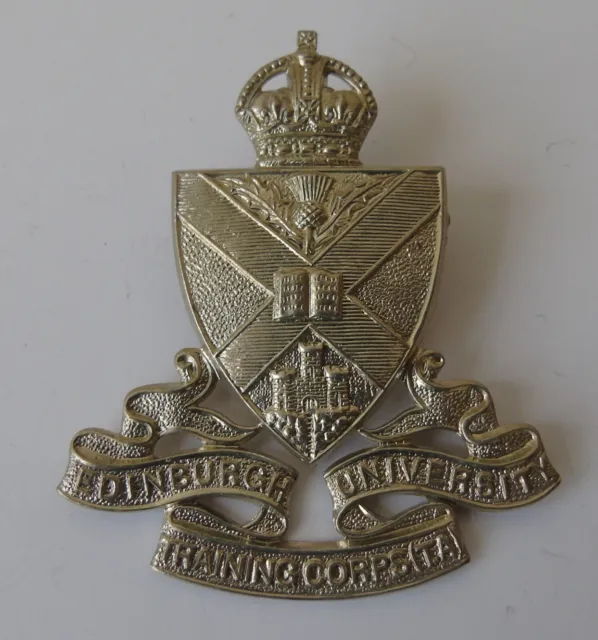
Edinburgh University Officer Training Corps OTC Cap Badge
£7.99 Buy It Now 6d 22h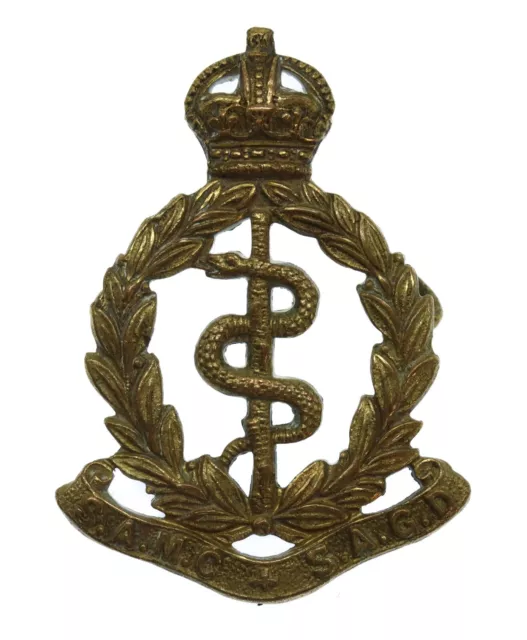
South African Medical Corps Officer's Cap Badge - King's Crown #22
£4.00 0 Bids 22h 21m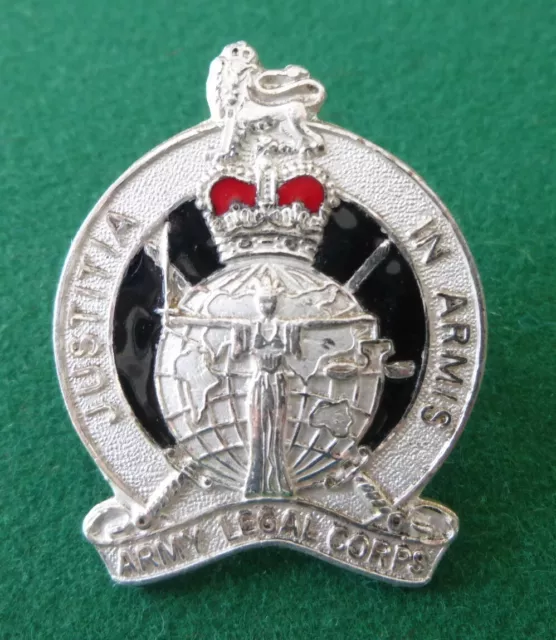
British Army Officer's Cap Badge - Army Legal Corps ALC
£10.99 Buy It Now 21d 21h
British Army Cap Badge. Southampton University Officer's Training Corps.
£10.99 Buy It Now 13d 12h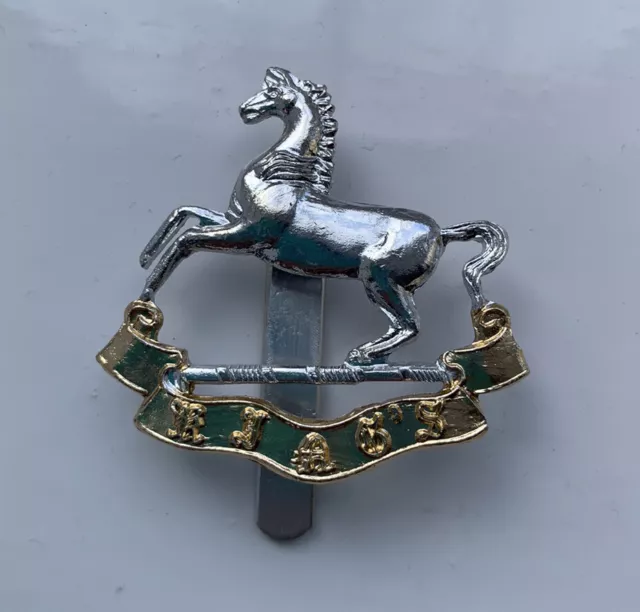
British Army Liverpool University Officer Training Corps Anodised OTC Cap Badge
£6.00 0 Bids 1d 0h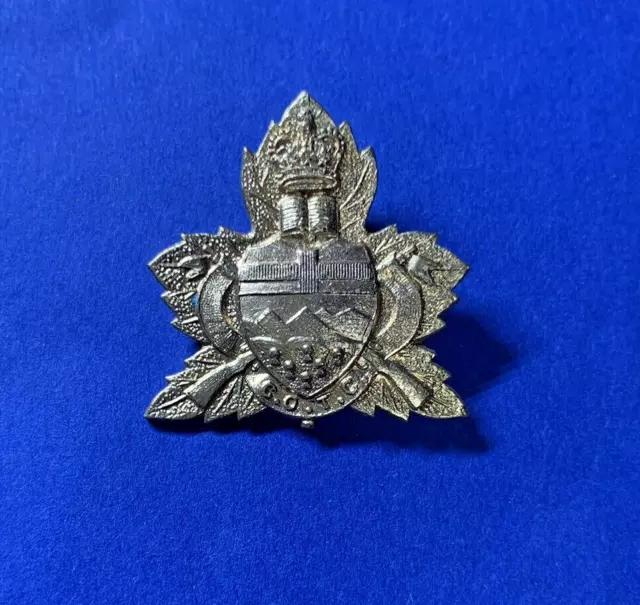
Gilt Sweetheart Brooch to the Canadian Officer's Training Corps
£5.50 0 Bids 7d 2h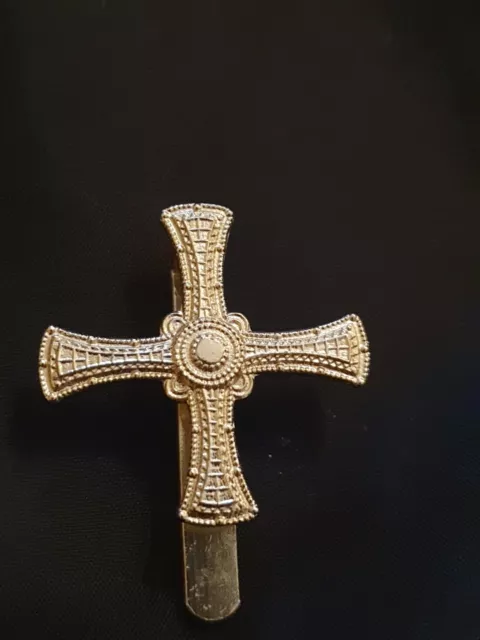
Northumbrian Or Durham University Officer Training Corps OTC Anodised Cap Badge
£9.99 Buy It Now 30d 22h
WW1 Bronzed Metal Officer's General Service Corps Cap Badge with Slider
£8.50 0 Bids 7d 1h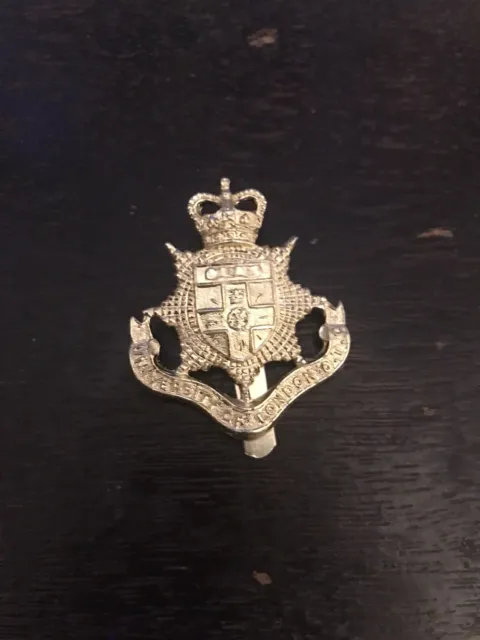
Anodised Cap Badge University of London OTC Officer Training Corps Firmin New
£3.49 0 Bids or Buy It Now 2d 1h
Victorian Crown Royal Army Medical Corps Officer's Cap 2-Lug Gilt Badge
£6.99 Buy It Now 13d 0h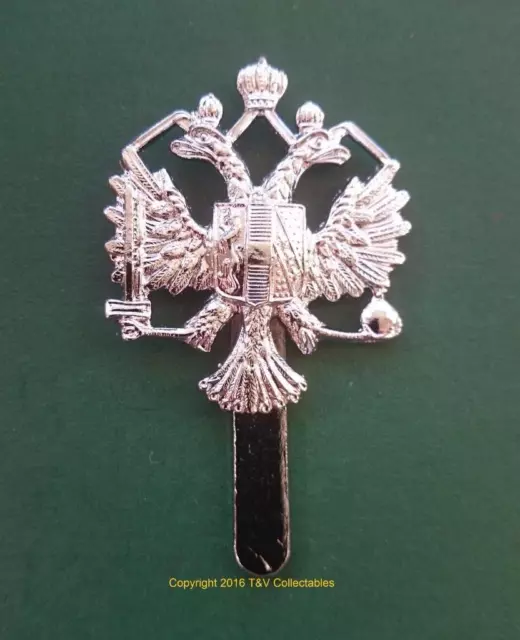
1st QUEEN'S DRAGOON GUARDS CAP BADGE (LBBC)
£12.99 Buy It Now 6d 5h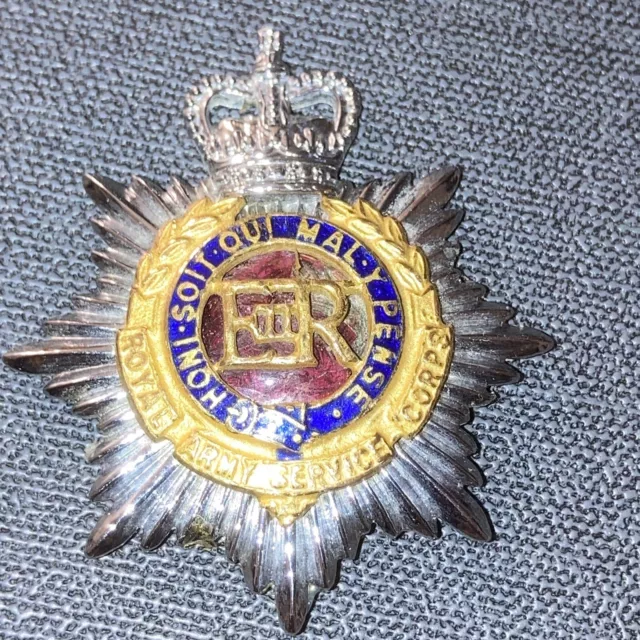
Service Corps Officer’s Vintage Enamelled Cap Badge (0861)
£9.00 0 Bids 1d 18h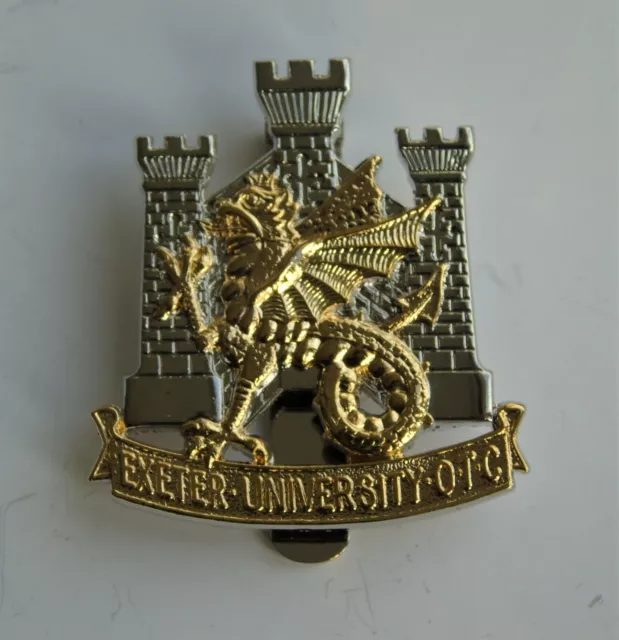
Exeter University Officer Training Corps OTC Cap Badge
£8.99 Buy It Now 8d 16h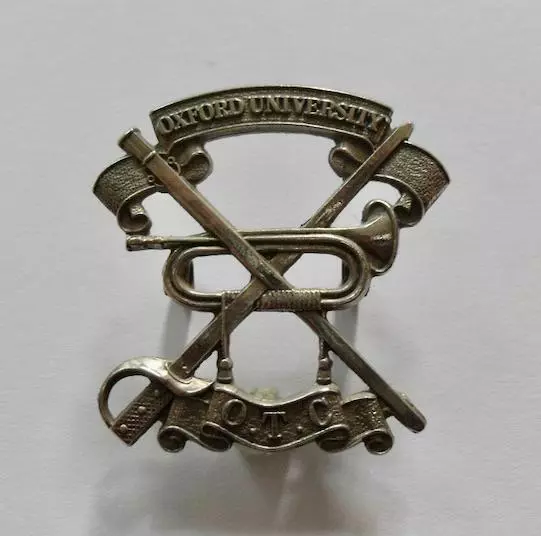
British Army Cap Badge. Oxford University Officer's Training Corps.
£12.99 Buy It Now 16d 12h
British Army Cambridge University Officer Training Corps Anodised OTC Cap Badge
£6.99 Buy It Now 25d 4h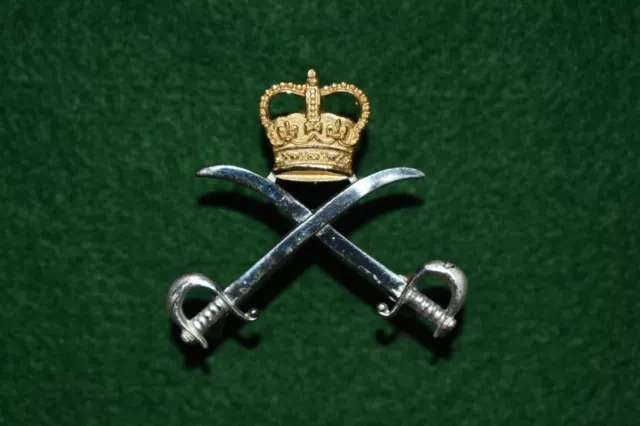
The Army Physical Training Corps Officer's Cap badge - EIIR
£15.20 Buy It Now 29d 9h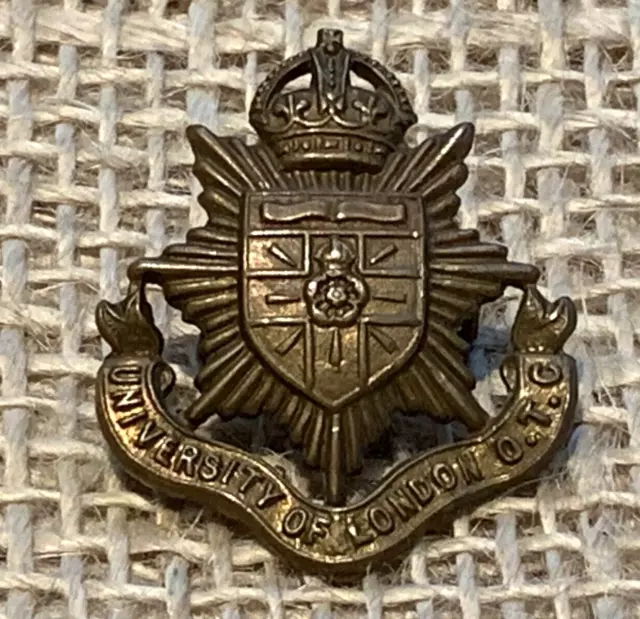
University of London Officer Training Corps Collar Badge
£17.95 Buy It Now 19d 16h
Aberdeen University Officer Training Corps OTC Anodised Cap Badge
£24.99 Buy It Now 19h 10m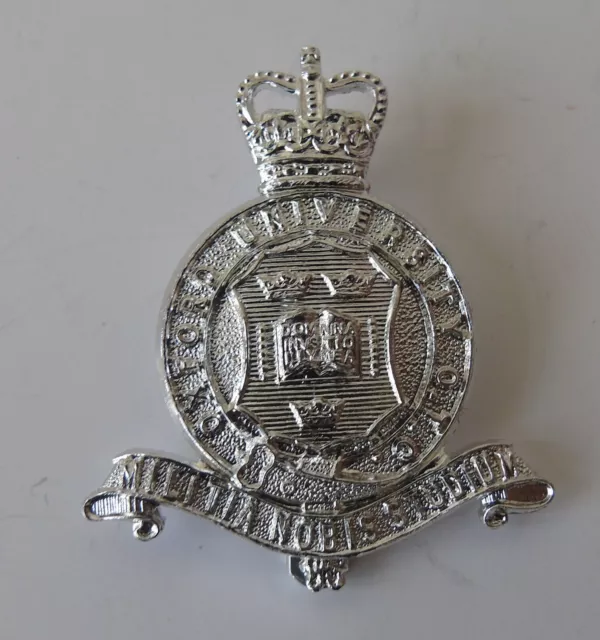
British Army Oxford University Officer Training Corps Anodised OTC Cap Badge
£7.99 Buy It Now 1d 0h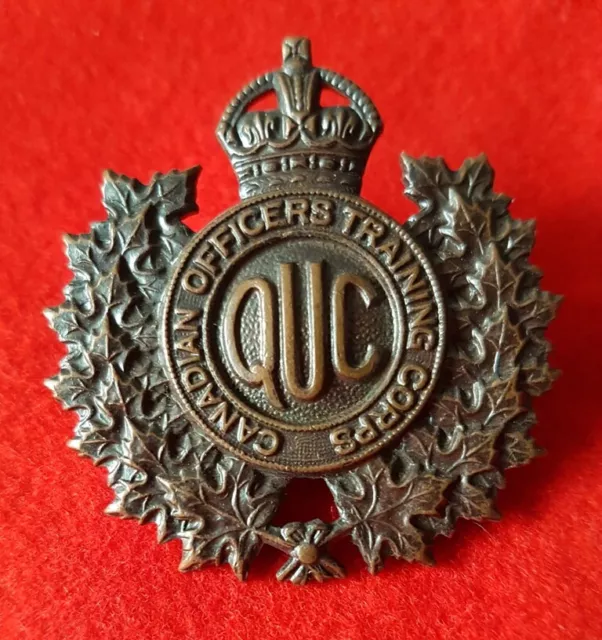
Queen's University Canadian Officer's Training Corps cap badge COTC
£20.00 Buy It Now 9d 18h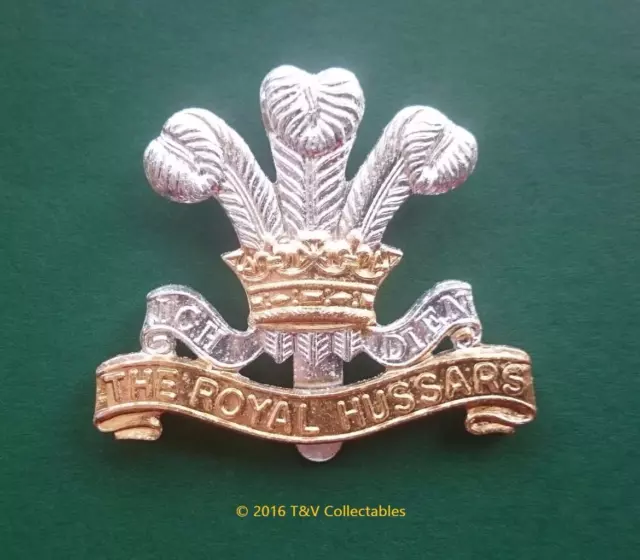
Royal Hussars Cap Badge (Lbbc)
£12.99 Buy It Now 18d 3h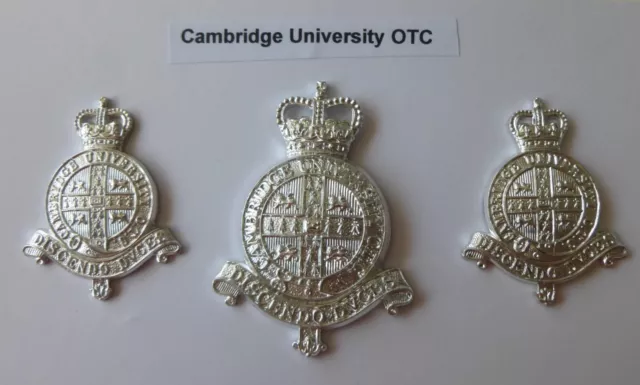
Cap & Collar Badges - Cambridge University Officer's Training Corps CUOTC
£19.99 Buy It Now 10d 18h
